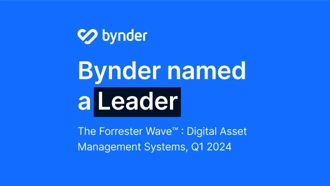What does content-first mean?
Content-first refers to an approach where you prioritize the consideration of content in projects over all other aspects.
Content-first is needed because there’s a tendency for organizations to let content quality slip at the expense of a far greater focus on design.
The approach can be broken down into five core aspects:
1. Keeping user experience (UX) top-of-mind
Content is thought about in terms of the deliverable as a whole and the user experience, rather than as individual pages or elements.
2. Considering all channels and formats upfront
Your organization, consumers, and audiences want unified and consistent content, so thinking about all of your channels and the content you need to distribute across each of them in good time will help you spot opportunities, gaps, or problems sooner rather than later.
3. Using content to define layout and design elements
Content-first is about understanding how content can inform design, rather than creating templates that you ultimately won’t use.
Valuable time can be saved upfront when a team has already discussed design-related issues and investigated how to solve audience problems with the content.
4. Utilizing proto-content
Proto-content is the most fundamental part of content-first design. It allows content and design to work together and in parallel from the start.
When you’re redesigning a website, for example, you can use proto-content instead of Lorem Ipsum to create more meaningful wireframes and prototypes. Some have termed it as 'sketching with words'.
It could be existing content, draft content, or sample content.
5. Understanding content and CMS requirements early
Content-first is about getting content discussions underway earlier — and across different disciplines and teams such as content, UX, design, and development.
This can include discussions around the technology needed to deliver content — like your content management system (CMS) — or the tools you might use to control the content creation process, such as Content Workflow by Bynder.
How can you introduce a content-first approach to your organization?
When it comes to implementing content-first design, you may need to build a business case for it, and also introduce it to teams and clients. Here’s how to start:
- Make people aware of changes and challenges. One of the best things you can do when introducing a new process is to communicate the changes and content priorities that will be coming early on.
- Focus on the value of content-first. What will it add to content creators' lives? How will it make things easier?
- Start with a content audit. Auditing your existing content will help you get your ducks in a row so that you can get the most out of any new content strategy.
- Get the right content-first toolkit. If you’re going to focus on creating content, you need a system that can keep track of all the design elements and multiple pieces of content as well as who is accountable for what.

